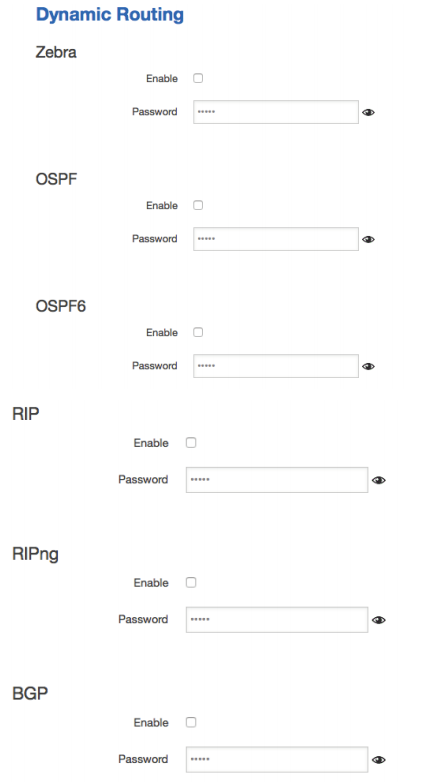Protocols supported by 4g sim card router
The four most common routing protocols are RIP, IGRP, OSPF, and EIGRP.
RIP(Routing Information Protocols), the most widely used distance vector protocol, was developed by Xerox in the 1970s. At that time, RIP was part of the XNS(Xerox Network Service) protocol cluster. The TCP/IP RIP is an improved version of the xerox protocol. The most important feature of RIP is that it is very simple in both implementation principle and configuration method. RIP calculates routing based on hops and regularly sends update messages to neighbors' industrial-grade LTE routers.
OSPF protocol was developed in the late 1980s and became an industry standard in the early 1990s. It is a typical link-state protocol. The main features of OSPF include support for VLSM(variable length subnet mask), fast convergence, low bandwidth utilization and so on. OSPF protocol exchanges link-state information between neighbors so that the industrial4G router can establish a link-state database (LSD). Then, according to the information in the database, the industrial-grade4G router calculates the routing table of industrial-grade full-network router by using SPF(Shortest Path First) algorithm. The Path selection is mainly based on the bandwidth.
E-Lins’ 4g sim card routers support:

Zebra: Zebra is an IP routing manager.
OSPF: Open Shortest Path First.
OSPF6: Open Shortest Path First for IPv6.
RIP: Routing Information Protocol.
RIPng: it is an IPv6 reincarnation of the RIP protocol.
BGP: Border Gateway Protocol.
E-Lins’ H6854Gsimcardrouter using a high-performance 32-bit embedded processor, embedded complete TCP/IP protocol stack, a RS serial port and at the same time provide 10/100 m Ethernet interface. Integrated IO terminal block, providing serial port or GPIO interface. Serial port RS - 232, RS - 485 and TTL level interface transparent transmission mode, support the VPN communication function, using IPSec/the PPTP, L2TP/GRE VPN technology, enterprise VPN tunnel technology and firewall technology, ensure high data security, security industry support automatic online detection, real-time dynamic refresh network status, keep clear of the link, products with stable performance, small size, easy to install, embedded, strong ability to resist environmental advantages, welcomed by users. Support WEB/Telnet/Console/NMS management system and other configuration, which users face is the WEB graphical management configuration interface, easy and simple management. The product has been widely used in the Internet of things industry chain of M2M industry, such as smart grid, smart transportation, smart home, financial, mobile POS terminals, since the dynamic supply chain, industrial automation, intelligent buildings, fire control, public security, environmental protection, meteorology, digital medical treatment, telemetry, military, space exploration, agriculture, forestry, water, coal, petrochemical and other fields.
Main features or H685 4Gsimcardrouter:
Built-in industrial module;
1 RJ45 LAN port +1 RJ45 WAN port (RJ45 WAN port can be converted into RJ45 LAN to obtain 2 LAN RJ45 ports), optional: WiFi, GPS positioning, DTU serial port
With wall fixing holes;
Support PPTP, Ipsec, L2TP, GRE way VPN;
I/O terminal block interface;
SMA antenna interface, high gain antenna can be replaced;
WiFi support (optional);
Support DTU function (optional RS232, RS485);
Support GPS function (optional);
SMS/voice control online and offline (SMS is the default configuration, voice is optional); Automatic dial-up on-line, on-line link detection is maintained;

 Networking
Networking EMBEDDED SYSTEMS
EMBEDDED SYSTEMS Switches
Switches Wireless Solutions
Wireless Solutions Industrial Computer
Industrial Computer Cloud Services
Cloud Services



